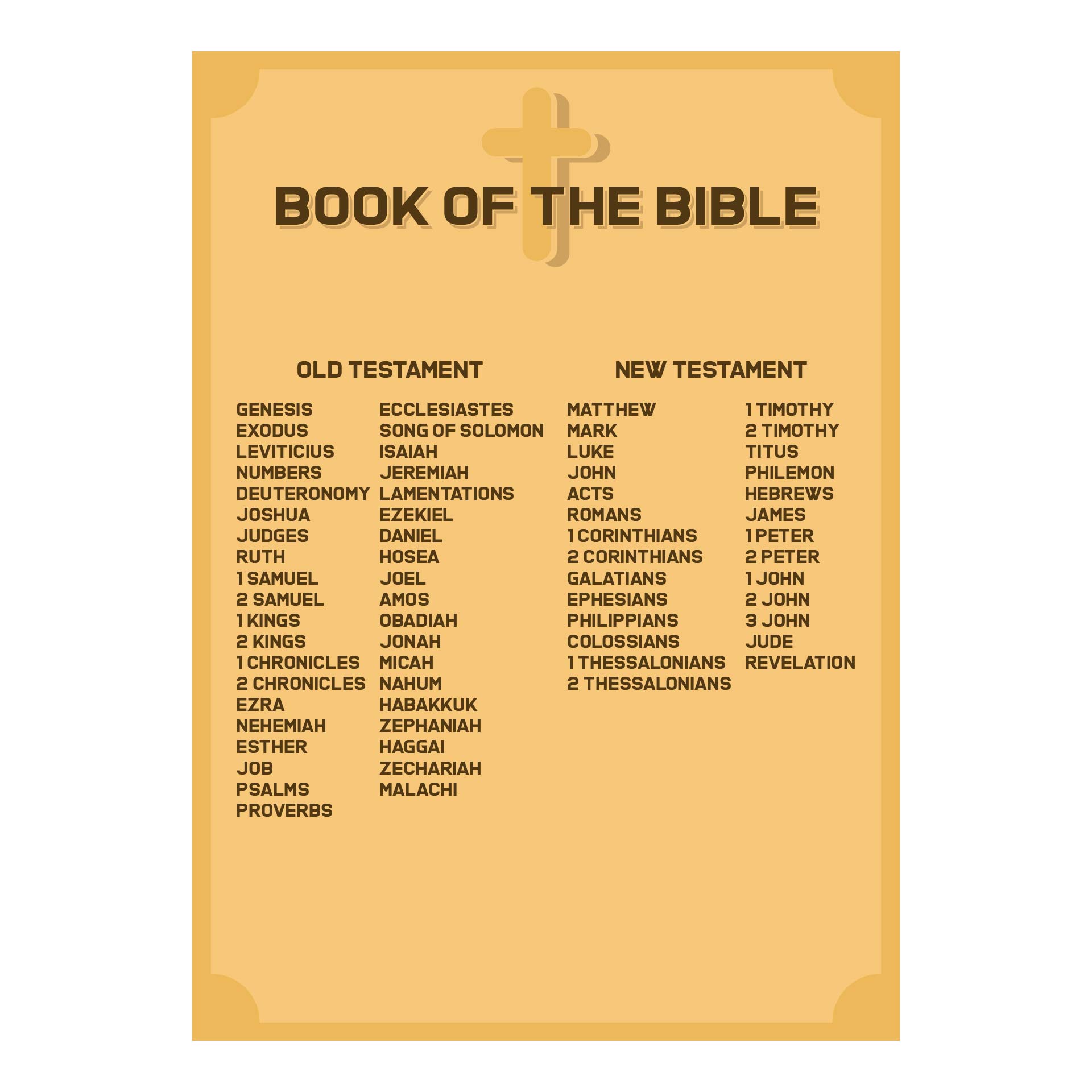The Bible has been a cornerstone of Western civilization for centuries. Its teachings have inspired countless works of art, literature, and music, and continue to be a source of guidance and inspiration for millions of people around the world. For those looking to deepen their understanding of this sacred text, a list of the books of the Bible can be a helpful resource. Here are some printable charts to help you keep track of the different books of the Bible:
Old Testament
 The Old Testament is the first part of the Bible and contains 39 books that were primarily written in Hebrew, with a few sections in Aramaic. These books are divided into four main categories: the Pentateuch, the Historical Books, the Wisdom Books, and the Prophets.
The Old Testament is the first part of the Bible and contains 39 books that were primarily written in Hebrew, with a few sections in Aramaic. These books are divided into four main categories: the Pentateuch, the Historical Books, the Wisdom Books, and the Prophets.
The Pentateuch, also known as the Torah, is made up of the first five books of the Bible: Genesis, Exodus, Leviticus, Numbers, and Deuteronomy. These books tell the story of the creation of the world, the history of the Hebrew people, and the giving of the Ten Commandments.
The Historical Books, which include Joshua, Judges, Ruth, 1 and 2 Samuel, 1 and 2 Kings, 1 and 2 Chronicles, Ezra, and Nehemiah, continue the story of the Hebrew people, from their conquest of the Promised Land to their exile in Babylon.
The Wisdom Books, which include Job, Psalms, Proverbs, Ecclesiastes, and the Song of Solomon, contain poetry, wisdom literature, and philosophical musings on the nature of God and human existence.
The Prophets consist of 17 books that contain the messages of the prophets who were sent to guide and warn the Hebrew people. These books are divided into the Major Prophets (Isaiah, Jeremiah, Lamentations, Ezekiel, and Daniel) and the Minor Prophets (Hosea, Joel, Amos, Obadiah, Jonah, Micah, Nahum, Habakkuk, Zephaniah, Haggai, Zechariah, and Malachi).
New Testament
 The New Testament is the second part of the Bible and consists of 27 books that were written in Greek. These books are divided into four main categories: the Gospels, the Acts of the Apostles, the Epistles, and the Book of Revelation.
The New Testament is the second part of the Bible and consists of 27 books that were written in Greek. These books are divided into four main categories: the Gospels, the Acts of the Apostles, the Epistles, and the Book of Revelation.
The Gospels, which include Matthew, Mark, Luke, and John, tell the story of the life, teachings, death, and resurrection of Jesus of Nazareth, the central figure of Christianity.
The Acts of the Apostles, written by Luke, continues the story of the early Christian church after the death of Jesus. It tells of the activities and teachings of the apostles and other early Christians.
The Epistles, which consist of letters written by Christian leaders to various communities, contain instructions and advice on how to live a Christian life. These books include letters from Paul (Romans, 1 and 2 Corinthians, Galatians, Ephesians, Philippians, Colossians, 1 and 2 Thessalonians, 1 and 2 Timothy, Titus, and Philemon), as well as letters from Peter, James, John, and Jude.
The Book of Revelation is a highly symbolic and allegorical work that describes the end of the world and the coming of the Kingdom of God. It is often interpreted as a prediction of future events, but its meaning is still the subject of debate among scholars and theologians.
Conclusion
With these printable charts, you can keep track of the different books of the Bible and deepen your understanding of this important text. Whether you are a devout Christian or simply interested in learning more about this influential work, these resources can be a valuable tool.
It is important to remember that the Bible is a complex and multifaceted work that has been interpreted and reinterpreted by generations of scholars, theologians, and laypeople. While these charts can provide a helpful guide, they are by no means a substitute for close reading, contemplation, and discussion of the text.